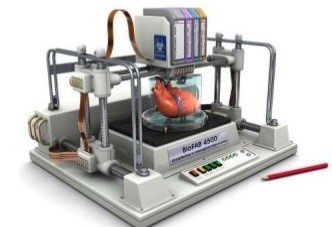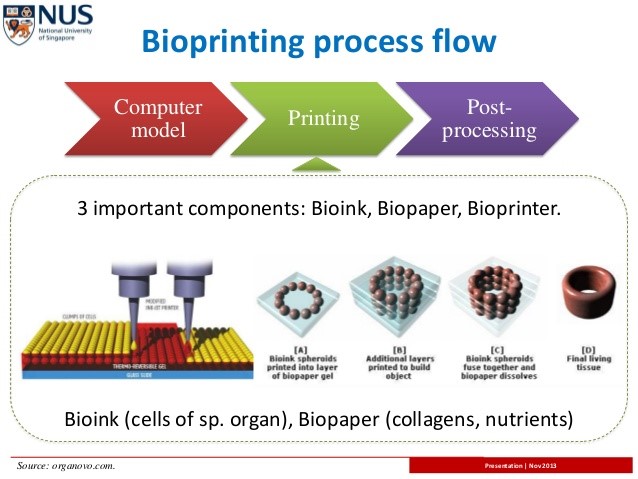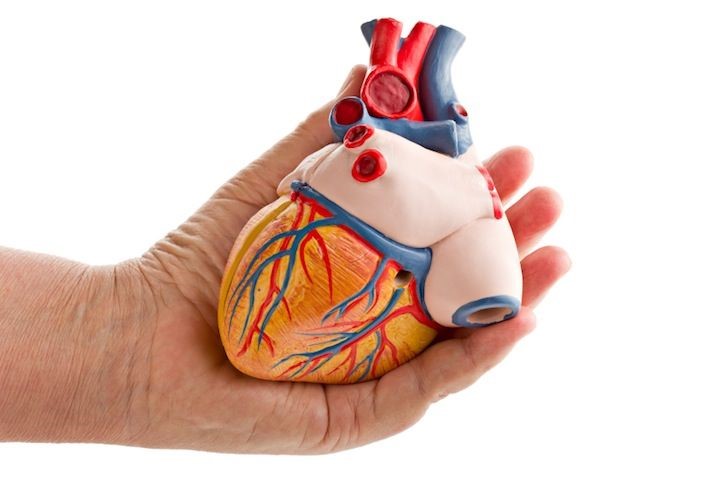In recent years, significant advancements have been made in 3D or additive printing and it has certainly come a long way ever since its invention in 1987. This technology has been substantially utilized in the field of medicine in terms of recreating bio-printed organs which in turn have helped in improving and saving many lives.
Bio-printing is the process of creating cell patterns in a confined space using 3D printing technologies, where cell function and viability are preserved within the printed construct. Bio-printing has begun to incorporate the printing of scaffold that is a temporary structure used to support a work crew and materials in developing 3D structures, i.e. they can be used to regenerate joints and ligaments.

BIO-PRINTING COMPANIES
Researchers, developers, analysts and medical doctors are working on body organs to develop artificial human organs. Doctors and R & D teams from California, Russia and South Korea, China and USA are investing a lot of resource in tissue engineering (evolved from the field of biomaterials development and refers to the practice of combining scaffolds, cells, and biologically active molecules into functional tissues) for improving the efficiency of these bio-printed products that could eventually replace the natural human organs. Some of the top manufacturers of bio-printing are:
TOOLS
The designing of 3D objects is performed by various CAD tools like:
- CURA
- CRAFTWARE
- 123D CATCH
BIO-PRINTING PROCESS
Firstly, the conceptual model of the organ is prepared for the printer for creation and the materials are aligned for its printing. Once a tissue design has been established, the next step is to develop the bioprocess protocols required to generate the multi-cellular building blocks, also known as bio-ink from the cells; this will be used to build the target tissue. The technologies used in Bio-printing are:
- Computed tomography (CT): an imaging procedure that uses special x-ray equipment to create detailed pictures, or scans, of areas inside the body. It is also called computerized tomography and computerized axialtomography (CAT).
- Magnetic Resonance Imaging (MRI).
- Tomographic Reconstruction for layer-by-layer printing structure. The images are then sent to the printer to be for printing or development.

(View of additive 3D printer)
- After the image is created, certain cells are isolated and multiplied further mixed with a special liquefied material that provides oxygen and other nutrients to keep them alive.
- The cells are encapsulated in cellular spheroids 500μm in diameter and do not require a scaffold.
- The liquid mixture of cells and nutrients are placed in a printer cartridge and structured using the patients’ medical scans in which a bio-printed pre-tissue is transferred to an incubator in which pre-tissue matures into a tissue. The precise process flow is shown as follows:

The post-bio-printing process is necessary to create a stable structure from the biological material. To maintain the object, both mechanical and chemical stimulations are needed that are required to send signals to the cells to control the remodeling and growth of tissues.
The image is printed by a sophisticated 3D printer using a bio-ink that is a material made from living cells; behaves much like a liquid, allowing developers to “print” it in order to create a desired shape.

(A bio-printed heart)
MATERIALS USED IN BIO-PRINTING
Human embryonic stem cells, resident stem cells and bone marrow derived adult stem cells are essential for organ development. Moreover, following materials are also required for bio-printing:
- ABS – Acrylonitile Butadiene Styrene or Lego Plastic: a very common choice for 3D printing.
- PLA – Polylactic Acid: available in soft and hard grades, is becoming very popular and may overtake ABS in the near future.
- PVA – Polyvinyl Alcohol: used as a soluble support material or for special applications.
- PC – Polycarbonate: requires high-temperature nozzle design and is in the proof-of-concept stage.
- SOFT PLA – Polylactic Acid: Is rubbery and flexible, available in limited colors and sources.
- Other Metals: Steel, Stainless steel, Titanium, Gold and Silver, chocolate, bio-ink, bone material, hot glue, glass, medication, skin and Hydrogel.
KNOCKS OF BIO-PRINTING
Research has shown that Bio-printing is the future of medical science as it can contribute to saving many precious lives. For example, a case of kidney transplant (Video by Carsten Engel at TEDxLiege) in 2014 resulted in the patient undergoing major recovery after successful surgery. However, the reliability of the bio-printed organs inside human body (like kidneys, bladders) in terms of its compatibility with external and internal changeovers of temperature during certain human activities is yet to be ascertained. The video ends with a valid question, i.e. ‘HOW FAR CAN WE GO’?
Moreover, recently a 9 months old baby in China was treated by a 3D-pinted replica of heart. It certainly does sound marvelous and is surely going to contribute to life increment in human beings. The referred article about the baby, however, does not reveal whether the heart was completely replaced by a bio-printed version or was it a replacement of defected parts only. Human heart is probably the most vital organ of the body and it has always been in the limelight of medical sciences in order to improve its health and performance. A research in 2014 at Louisville Kentucky suggests that it will take decades to develop a heart that functions properly as that of natural human heart.
3D & BIO-PRINTING IN PAKISTAN
3D Printing in Pakistan is being practiced but on a small scale. It was introduced when Robotics Lab was launched in 2011 in Karachi founded by two Silicon Valley colleagues. They bought a 3D printer for the lab as a tool to help children learn science. Moreover, a low cost 3D printer was designed by an individual in Karachi which is used in prosthetic limbs production. Technical setups have been established lately contributing to other dimensions of 3D printing and limited prosthetic products. Listed below are a few organizations in Pakistan that are providing 3D services in this field:
- The Marks, Lahore deals in 3D Printing, 3D Designing/Modeling, 3D Scanning, 3D Printing Workshops/Trainings, 3D Printing Consultancy/After-Sales/Repairing, 3D Printers, 3D Printer Filament and3D Printer Parts.
- Print3D Pakistan, Karachi: 3D Printing Services, 3D Printers, Filaments, CAD designing & related accessories in Pakistan.
- Grit3D, Karachi: Wrist Actuated Hand (enabling disabled community).
- Other setups include 3D printing of letters, posters and a few like Cinepax and The Arena provide 3D graphic support motion pictures.
In the academic sector, some universities like NUST, FAST NU and IIUI have played their part by assigning students final year projects pertaining to 3D Bio printing. A few prototypes were also funded by Ignite (Formerly National ICT R&D Fund) under its program National ICT Grassroots Research Initiative. Some of them are mentioned as follows:
- 3D Printer, Hajveri University Lahore (2015-16).
- A hand bild 3D Scanner Using Leap Motion Device, DHA Suffa University Karachi (2015-16).
- PORTABLE 3D PRINTNER, International Islamic University (2014-15).
- Stereo Vision based 3D Reconstruction, FAST NU Peshawar (2014-15).
- 3D laser Surface Mapping, MCS NUST Rawalpindi (2014-15).
- 3D Virtual MMOG (Massively Multiplayer Online Games) for Distance Learning, University of Agriculture Peshawar, (2013-14).
- 3D CNC based PCB Drilling Machine, University of Punjab (2012-13).
- 3D Human Body Pose Recovery for Performance Analysis in Sports & Physiotherapy, Air University Islamabad, (2012-13).
POSSIBLE WAYFORWARD FOR BIO-PRINTING DEVELOPMENT IN PAKISTAN
Thinking and planning for a healthy future is an activity that is continuous and medical science is progressively moving towards achieving that goal. Bio-printing is gaining popularity and soon will get the attention of people all over. In Pakistan, the challenge is to find regenerative medicine experts of who understand the pros and cons of bio-printing. Efforts are required by concerned stakeholders to raise their voice in favor of the best possible utilization of bio-printing and technologies allied to it. The lack of progress could be due to security issues within the country and this has halted progress of any branch in 3D printing. Startups have to acquire an NOC from the Ministry of Interior to import such equipment due to security reasons.
Taking this idea into consideration and discussion of available subject specialists will hopefully attract the attention of potential people to come and participate in the cause of spreading awareness about bio-printing through productive forums. Initially, this can be done at micro-level through social media, focus groups and online communities’ interaction that will help in identifying researchers & professionals of 3D printing, medical doctors and in social activists of the field Critical input from medical experts will play a significant part in maturing the ideology of bio-printing in Pakistan.
Once an idea bank is formed, it can be expanded to national level surveys and studies that should analyze the demand of bio-printing, its acceptance by the public and business prospects. This will eventually lead to suitable regulatory changes through respective forums of the Government and possibly the formation of a suitable, secure and comfortable policy for importing 3D equipment.
Quoting Andrew Zaleski, that it is “The new frontier in medicine that’s not science fiction”, we must adopt and accept it for a healthy future.


A Very informatic article, modern science is doing miracles (y)
I would like to ask, can such digital printed human organ grow inside human body ?
Hi, thanks for reading it and raising a query. At this point of time,a lot of research in going on. The tested subjects as referred in the blog have been categorized successful, so it means the growth is possible.
No doubt 3D/4D printing is the next revolution in medicine. It was well written and contained practical information. We must promote more research in this field. I look forward to read your next informative work. Thank you
Thanks alot.
This is great work. I am sure it requires a lot of hard work and can bring in new ways of providing healthcare. Congratulations on your work. And a huge applause for ICT for envisioning the future and supporting it!
Thank you for sharing this informative article. And a huge congratulations to ICT for envisioning, believing in and supporting the future.
Appreciate your response. Thanks alot.
A very informative article. future is here !
Hello there, You’ve performed an excellent job. I will definitely digg it and personally recommend to my friends. I am confident they will be benefited from this website.
https://economicsquare.com/members/harrisn06/activity/203445/
Thanks – Enjoyed this article, is there any way I can receive an email sent to me whenever you publish a fresh post?
https://accuratedonor996.page.tl/Understanding-Basement-Finishing-Contractors-_-Vitally-Important-Facts-You-Must-Find-Out.htm
I was suggested this blog by my cousin. I’m not sure whether this post is written by him as nobody else know such detailed about my difficulty. You’re amazing! Thanks!
https://en.wikipedia.org/wiki/Glory_(1989_film)
Outstanding post however , I was wondering if you could write a litte more on this topic? I’d be very thankful if you could elaborate a little bit further. Thanks!
https://drew99.blog.pl/2016/07/16/a-truly-cool-topic-audio-chat-room/
You could certainly see your skills in the work you write. The world hopes for even more passionate writers like you who aren’t afraid to say how they believe. Always go after your heart.
https://journals.fotki.com/malikilig/A-Nice-Long-lasting-Stra/
You have some really good posts and I think I would be a good asset. I’d love to write some material for your blog in exchange for a link back to mine. Please send me an email if interested. Thanks!
https://blog1.de/horheu/3779175/First+Stories+Around+Bathroom+Designer.html
It’s actually a cool and helpful piece of info. I am happy that you just shared this helpful info with us. Please keep us up to date like this. Thank you for sharing.
https://www.russelllechard.com/demo3/discussion/103630/information-about-digital-video-surveillance-system-and-also-free-video-surveillance-software
magnificent points altogether, you just gained a new reader. What would you recommend about your post that you made a few days ago? Any positive?
https://www.robinspost.com/socialmarket/blog/view/143456/franchise-business-opportunity
Hi thanks for sharing this its very help full
Wow very nice post and very informative article i just buy my 3d printers to this website and they have best 3d printers for sale!
Great post
https://cgifurniture.com/